Thought of calling this ‘Reasons to Believe’ but crackpot creationists got there first…
I can’t help feeling deeply annoyed by Xmas. It’s difficult to pin down precisely what it is that’s the problem. It’s easy to feel that ‘our festival’ has been ‘stolen’ and rebranded so as wholly overshadow the original. It’s easy to feel unhappy at the gross commercialism of it all. It would be nice to be able simply to ignore Xmas, but it has too great a momentum for that. I can’t help feeling that ‘my’ festival, and my own involvement in it, is unavoidably polluted. I know perfectly well that there is no single ‘pure’ Solstice, but still there is a craving for it that doesn’t apply so much to other festivals.
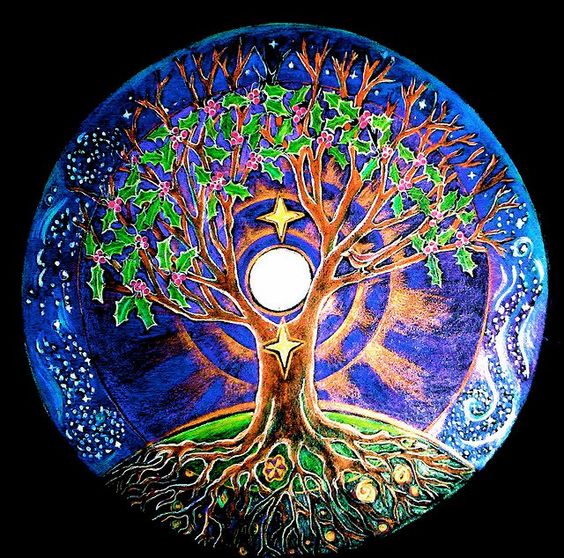
The problem of Xmas, it seems to me, is greatly compounded in that it is not a ‘proper’ religious festival at all. Rather, it is quasi-religious, that is, purportedly or nominally such, whilst for almost all participants, religious meaning is not actually believed and indeed is fundamentally irrelevant and quite ignored. Xmas is also pseudo-religious, by which I mean that the ‘religion’ being propagated is largely a spurious counterfeit of ‘real’ Christianity. This bizarre combination is something of a problem for Pagans, in that that our own attempts to counter-present the ‘True Meaning of Winter Solstice’ struggle to find any grounding.
I am unsure as to whether it is really a help to expand a bit further on the idea of Xmas as pseudo-religion. However much I think of myself as someone receptive to rational thought, I am aware that the force of Xmas is completely non-rational. Arguing against it is like trying to punch a ghost – one is more likely to fall flat on ones face from the momentum of the attempted blow than to make any contact.
The pseudo-religion that is presented to us, uncritically, at this time of year is the ‘Nativity Story’. It is fundamental to the nature of Christianity that their stories are literally, historically true. Nonetheless, almost nobody actually believes in the NS. In fact even the most conservative Christian scholars now regard the stories of Jesus’ miraculous birth as being historically unreliable. The idea of the ‘nativity play’ or ‘nativity scene’ is usually first credited to ‘St. Francis’ at 1223 ce – which means that it did not feature in Christian practice for the first 1000 years or so. It would be perfectly reasonable to argue that the NS is effectively a new religion in itself – if it were actually believed in.
Here in the UK we have a prevalent ‘tradition’ of nativity plays being presented by primary school children. I suspect that the ‘traditional’ use of young children as actors dates only from the late Victorian era, as children were gathered into compulsory state education. Nowadays, in more multicultural communities, there has been some movement away from this stuff, but here in rural Wales, there’s no let up from it. I was horrified, if not especially surprised, to read in the local newspaper that ‘Carmarthen residents’ were ‘flooding’ into a local church where adult actors presented a nativity play – a ’20-minute spectacle’ apparently with children as the intended audience.
One child was reported as ‘liking’ the birth. I suspect that there were no maternal screams, nor blood, despite these being a normal part of the birth process, now familiar even to the youngest via television soap operas. I suspect too that the kiddies may well be confused as to what a Virgin might be. Theologically, a painless birth could be valid – Christian doctrine is that difficulty in childbirth is the punishment for Original Sin, but that Mary was Without Sin. Lucky girl. What I do find deeply distasteful though about all this is that, according to usual doctrine, Mary was indeed a ‘girl’ – more specifically aged no more than 13 or 14, and hence in modern view, not legally capable of consent to any use of her reproductive and sexual organs. This issue is easily ignored when all the actors are children, but to have Mary presented by an adult is fundamentally dishonest.
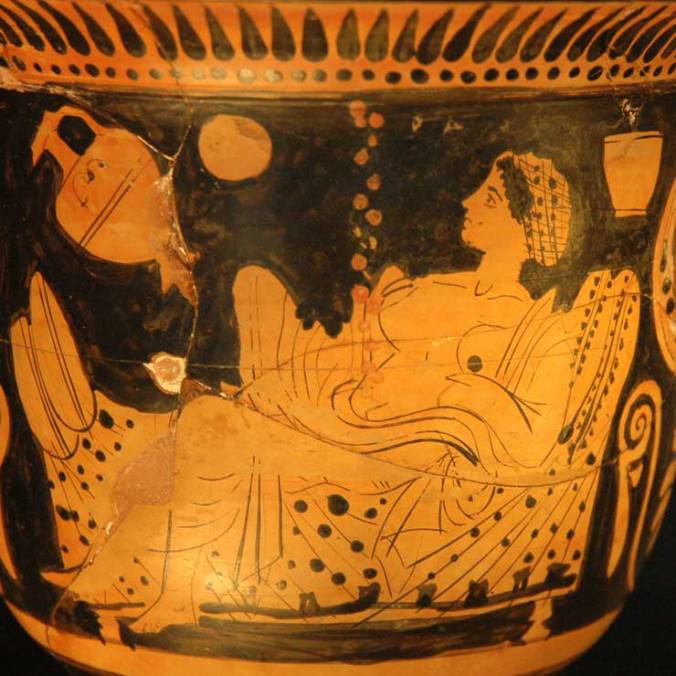
There are scenes similar to the Annunciation in Pagan religions – the story of Zeus and Danae for example. One could even conjecture that the fable of Mary’s Annunciation was in fact derived, or even directly appropriated, via a process of ‘iconotropy’, from this specific ‘myth’. In any case, there is no question that Danae is other than adult and wholly consenting. Some other impregnations narrated as by Zeus are clearly less than consensual, and for these the word ‘rape’ is used explicitly. A quick google with ‘mary jesus rape’ will find you ample discussion of this issue – typically the Christians ‘apologise’ (that is, explain away and make excuses). The similarity of such discussion to Trumpist rape-denial (often also by ‘Christians’ in the US) is very apparent.
Most of the rest of the NS is just silly rather than objectionable. The ‘Mark’ gospel is considered to be the earliest written of the four, and broadly the ‘factual’ basis for the others, but it does not mention the NS, implying that it was not considered of much importance by early Christians. Nor is the more mystically-minded ‘John’ concerned with the NS. The other two, ‘Matthew’ and ‘Luke’ present their own stories which are inconsistent with each other to a remarkable degree. If you’re interested in details of all this, try a google with ‘nativity story inconsistency’. The NS is more of a pastiche than what is actually in the Bible. Fascinatingly, the NS religion has such hegemony that even Christian priests are surprised if they actually check the texts. (I have observed this phenomenon directly!)
I’ll leave to readers to follow this up for themselves. It’s well-known that the notion of the census is absurd, as well as undocumented by the bureaucracy of the Augustan Empire. Less discussed are the homely themes that provide the ‘human interest appeal’ – it takes a hard heart not to be moved by the idea of a homeless young parturient. If only similar consideration were given to present-day refugees from that part of the world… Unfortunately, the inn, the stable, the manger – all this stuff is either mistranslation or just not there in the original texts. Likewise donkeys, oxen and camels.
Pagans are more comfortable with the window-dressing. We are quite clear that holly and ivy are nothing to do with any original NS. Likewise the Yule tree (condemned in the Bible, as noted in previous post) It’s generally fairly easy for us to incorporate any of the midwinter ‘folk customs’ into our own Solstice practice, both as practical things and linked to spiritual meaning. More difficult however is actual ‘belief’. Some would say that we don’t necessarily have or need ‘belief’ – that Paganism is based on ‘orthopraxy’ rather than ‘orthodoxy’. Nonetheless, in the absence of definitive and authoritative texts, Pagans have typically felt obliged to develop ‘belief’, though usually not requiring all to be literally true. We know, of course, that both in historically documented Paganisms, and in the many continuing Pagan cultures, there is an enormous variety of belief in general, including details as to Winter Solstice. Writers of the past – some sympathetic, some hostile – have often attempted to construct some single primal Pagan belief system. All such attempts seem to fail from the weight of counterexample.
The sympathetic or inquisitive will readily ask us “So what do Pagans believe about Winter Solstice ?’ and we are often challenged to provide a coherent response. We feel that we ‘should’ have coherent answers to such a question and so try to fudge them into a theology. It remains though, that our answers, unlike those of the Abrahamic religions, are best not presented as Universal Truth.
Modern NeoPaganism began as a movement in Britain and north-western Europe, then spread mostly to similar temperate climates. It’s only to be expected that our ‘beliefs’ or theology regarding Winter Solstice should be connected to our actual experience of the midwinter in this part of the world. Experiences elsewhere can be very different. The most fundamental issue with this is that in the southern hemisphere things are opposite – this time is their Summer Solstice, and from the point of view of Earth as whole, of that Gaia Herself one might say, these are simultaneous. Moving further south from our UK latitude, things get steadily warmer, the path of the sun is higher, and the solstice easily feels much less significant. Our word ‘solstice’ is derived from Latin, so surely the event was readily noticeable in Italy. But it’s hardly as astronomically dramatic as in Scotland, say.
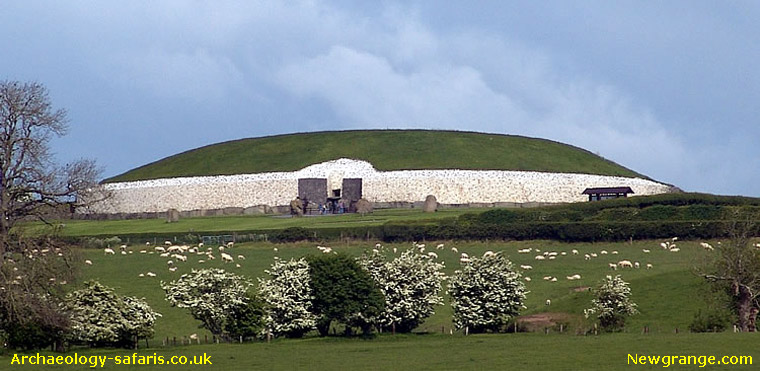
Go much further north, cross the Arctic Circle, and the phenomenon of polar night becomes dominant. For example, on the Norwegian territory of Svalbard, civil polar night lasts from about 11 November until 30 January. It’s not pitch-dark for 24 hours – there can be a distinctive blue twilight around mid-day. But the sun itself is not seen above the horizon, and so any significance of dawn on Solstice day must fall away. If the great temple mound of Newgrange had been built on Svalbard, it would have had to face a different direction, and its carvings would not have been illuminated until as late as our Imbolc festival.
Within Wicca-inspired Paganism, certainly the most popular theme, if internet memes are to be credited, is that ‘the Goddess becomes’ the

Great Mother’ and gives (re)-birth to the Sun God. It is quite basic, I think, for human beings to be inspired both by actual birth and by the sight of any sunrise. At my home a clear view is not so common – skies are often overcast, and all we get is a progression from dark gloom to a lighter grey. Even when skies are clear the combination of hills and trees complicates the horizon, delaying visibility of the sun’s ‘limb’ – a clear sunrise is something special! I can easily imagine how for someone, maybe for many, the sunrise at Solstice could go beyond ‘ordinary everyday inspiration’ and take on the character of religious vision. Those who are seriously spiritually inspired tend to spread their views. Indeed, I would speculate that the many wonderful ‘illuminated barrows’ found in Britain and Ireland derive from a specific religious movement of our early Neolithic period. There seems to be evidence now that this spread southward from Orkney.
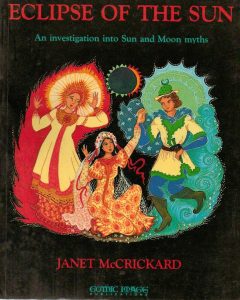
I could further speculate that practices linked to the barrows, and such phenomena as the chiaroscuro upon the spirals and other carvings actively stimulated trance and ‘altered states’ that perpetuated this new religion. The problem for me though comes in trying to turn such vision into theology, words and concepts. When I first became Pagan, the idea, that is, the gender assignment, of the ‘Sun God’ was pretty much unchallenged, despite the absence of this concept in both Celtic and Norse myth. The idea seems to have been derived not from the personal vision I imagine above, but rather from Victorian scholarship, for which all Paganism was ‘sun worship’ anyway. In 1990, Janet McCrickard published ‘Eclipse of the Sun’, and after that, it became generally acknowledged in the Pagan community that the Sun is thought of as Goddess in a large proportion of historical and current Pagan cultures. In the many ancestral Pagan traditions, including Celtic, Norse, Slav/Baltic, Japanese, where the Sun is seen as a Goddess, surely rather different stories are told. In Britain for example, the Goddess Sulis (known at the city of Bath, by Her hot springs) is said to be the Sun underground in winter.
Another Wiccan / Druidic theme, with allegedly ‘Celtic’ connection, is that the winter solstice is the time when the Oak King of the waxing year once again vanquishes the Holly King of the waning year – possibly as in the 14th century poem ‘Sir Gawayne and the Grene Knyghte’. This idea is largely derived from the work of Robert Graves, moving into wider popularity via the writers Stewart and Janet Farrar in the late 1970’s. The poem may well be fun enough to enact. It might even be psycho-spiritually transformative – I can honesty say that my own first encounter with ‘Sir Gawayne’, at eighteen, was one of the events that set me on the Pagan path. I still feel a close connection to Gawayne, especially in the form of his Welsh ‘counterpart’ Gwalchmai.
But I’m not at all sure I want to make this idea the centre of my religion. I’m suspicious of dualism in general, and especially of forcing all dualisms into one super-principle. The actual stories told in Britain don’t make a good fit to Oak / Holly dualism. In ‘Sir Gawayne and the Greene Knyghte’ the return bout is not after six months, but rather a full year afterwards, and there is no suggestion of any repetition. For me, the story reads more like a warrior’s initiation rite. In Scotland, there are stories of a Cailleach / Bride opposition, but these are both Goddesses, and their story focuses at Imbolc. In Wales, the story is that Gwyn ap Nudd and Gwythyr ap Greidol fight for the love (or posession) of Creiddylad. But they do this at Beltane (and, somewhat less-mentioned, at Samhain). Is my religion really based on the idea of two blokes fighting over control of a woman? When I worked with prisoners, the thought occurred that some were there for doing precisely that!
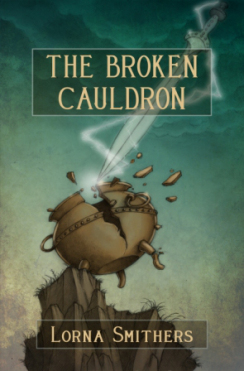
Lorna Smithers writes challengingly as to Gwyn, Gwythyr and Creiddylad at https://lornasmithers.wordpress.com/2015/04/12/gwyn-gwythyr-and-creiddylad-a-story-from-the-old-north/. Also further in her book ‘The Broken Cauldron’ – https://lornasmithers.wordpress.com/publications/the-broken-cauldron/
You can see that I’m getting away from any idea of ‘belief’, in the sense of well-formulated and conceptualised doctrine. We often say that Paganism is ‘mystery religion’, meaning not ‘secrets’, but rather that it must be experienced. Concepts, as intellectual things, generally fail to reach the deep psychic places, nor do they unite community in any positive way. In fact, they often serve only to divide, as exemplified by the holy wars of the Abrahamists.
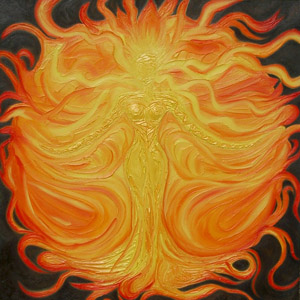
When we try to respond to ‘what do we believe’ we generally tend to slide the answer into description of what we do. That’s what really matters to us. Celebrating the Solstice. As an astronomical event it is unavoidable. Each of us will get their own inspiration from the actual celebration of Solstice, renewed each Solstice Dawn. I find it more satisfying to move into my ‘Simple Country Pagan’ consciousness at this time, celebrating the renewal of the Sun, just as it is (and even if rain hides Her.). I am happy that the Sun is not simply a dead ball of nuclear fire – and so it seems most appropriate to honour Sunna as culturally the closest Goddess.
Hail to the Sun who walks the way
Of dusty dawn, of golden glow,
Of glint of growing, turning Day.
Hail to the cycle and the flow.
(opening poem from http://www.northernpaganism.org/resources/prayers-rituals/sunna-ritual-for-yule.html)
Next post will focus on what one actually does at Solstice practice, including my own attempts to get away from the dreaded Santa